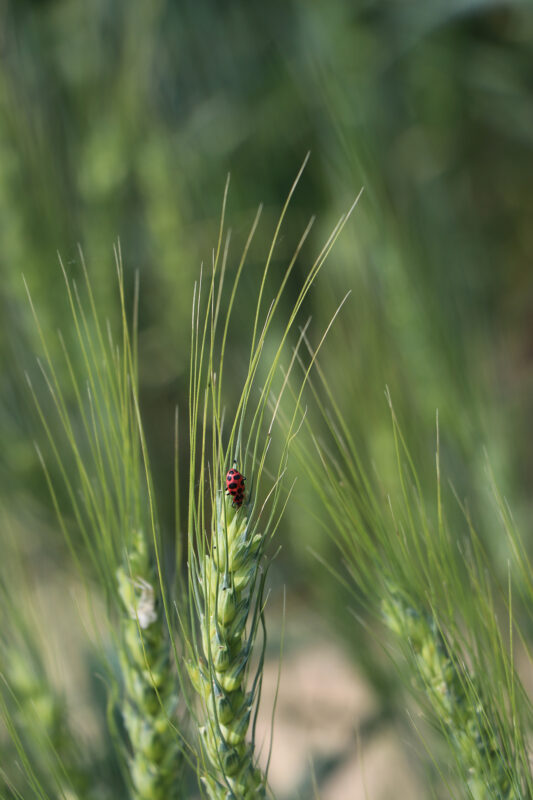![]()
By Chabella Guzman, UNL communications specialist

The Panhandle of Nebraska experienced favorable planting conditions for its hard red winter wheat with good soil moisture. Many growers are also seeing good emergence from the mild fall.
In the recent November U.S. Department of Agriculture’s Wheat Condition Report, winter wheat conditions are rated 5 percent very poor, 13 percent poor, 36 percent fair, 35 percent good, and 11 percent excellent. Cody Creech, Nebraska Extension Dryland Cropping System Specialist, said in the Panhandle the wheat is mostly excellent to fair with very little poor.
“Even the late planted wheat is up and getting well-established,” Creech said. “It’s the wheat coming in behind a different crop, like dry beans or soybeans, that has been a little slow to get going. Overall, wheat is in a good position to overwinter and move into next year.”
The warm fall, which is allowing the late-planted wheat to catch up, could cause some concerns if it continues. Winter wheat typically goes into a dormant state in winter, but the mild fall could cause the wheat to overgrow and use excessive soil moisture needed for the spring. Another challenge could be the survival of the wheat curl mite. The longer it survives, it serves as a bridge for various viruses that could affect winter wheat in the Panhandle.
“Hopefully, we’ve had enough cold, but there is that worry of mites moving in and affecting newly established wheat,” Creech said.
The winter weather outlook for 2023-24 calls for an overall mild winter. In a release, Eric Hunt, Nebraska Extension Agricultural Meteorology and Climate Resilience said growers should stay on top of the seven-day forecasts.
“My best advice for the upcoming winter is to be prepared for the blizzards and rapid swings in temperature,” he said. In eastern Nebraska, growers shouldn’t expect to see a significant improvement in drought conditions between December and early March.
So far, the Panhandle of Nebraska has had very little snow and rain. Creech would like to see more of the former as the months progress.
“We always welcome snow in wheat country to protect it,” he said. “Moisture is a good thing in winter, especially snow. I’d like to see us avoid extreme cold events, but if the soil has some moisture, the wheat can handle almost anything.”
